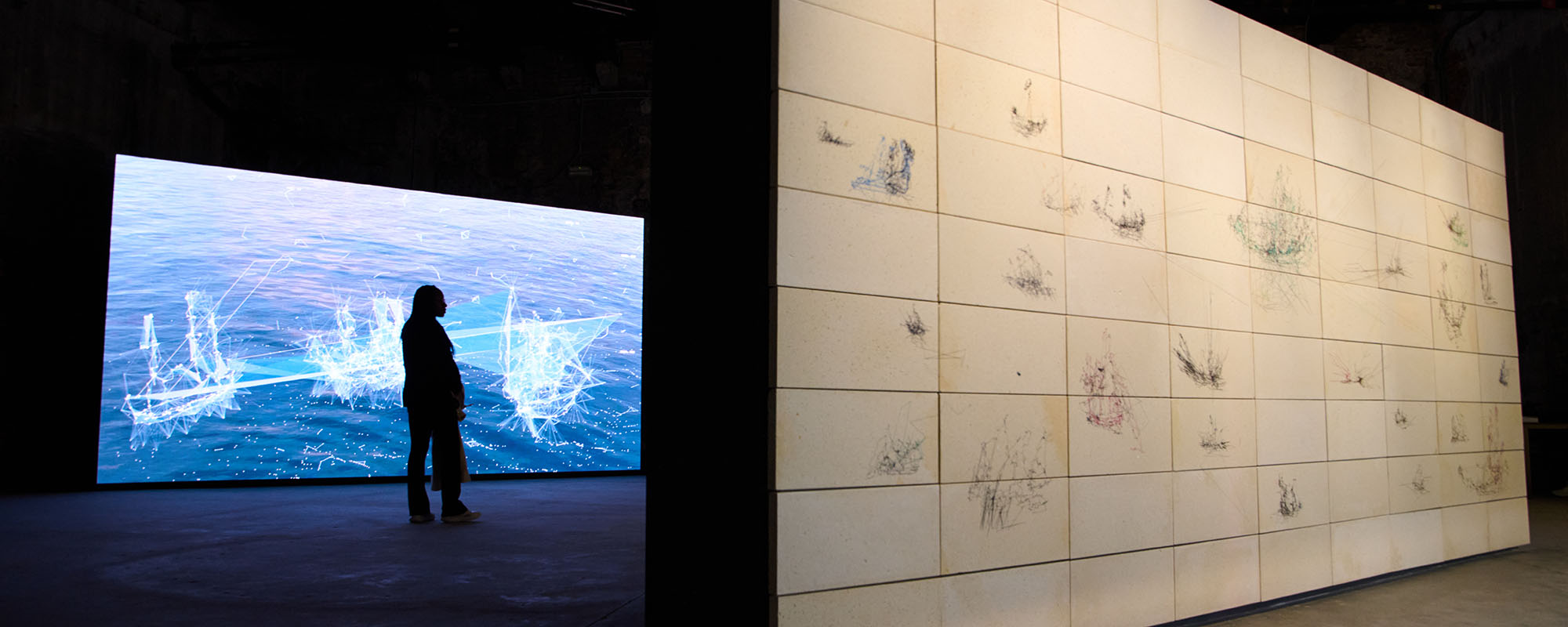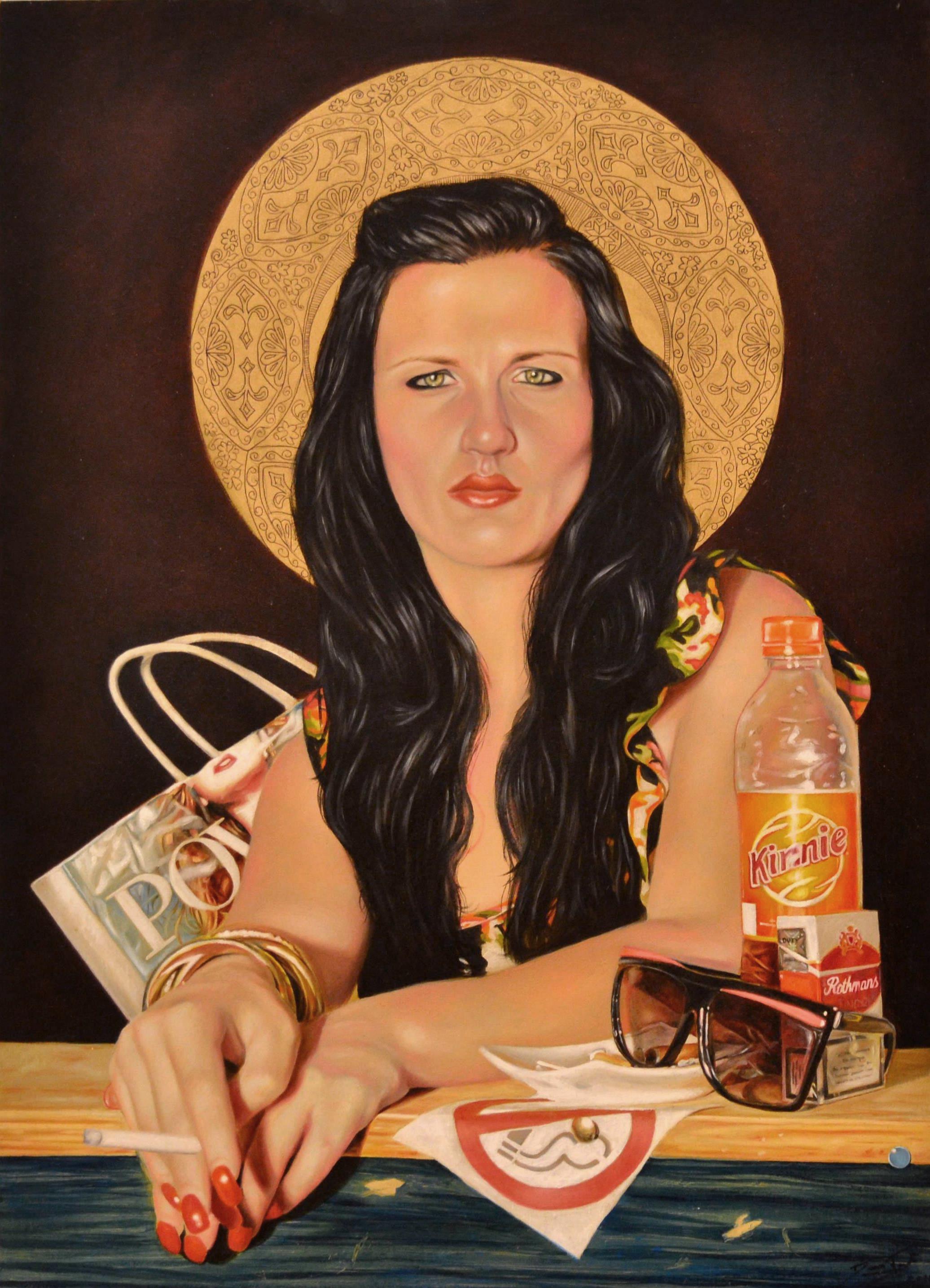Matthew Attard, chosen to represent Malta in the 2024 Venice Art Biennale, reimagines ship drawing by melding it with emerging eye-tracking technology.
Continue readingPaintings in motion
Vince Briffa’s contribution to the Venice Biennale in 2019 is OUTLAND. An audio-visual piece inspired by The Odyssey, a story intimately linked to the Maltese islands’ own folklore, the work unfurls over many layers.
On one level, it explores the lure of safety and the numbness that can bring—exhibited through Ulysses’ portrayal, who is caught in a bubble of his own making. ‘The plastic room replaces the island from the story, presenting a different interpretation,’ explains Briffa. Here, it is Ulysses’ own mind and thoughts that keep him trapped.
The character of Calypso is also a reflection of the theme MALETH—port and safe haven. ‘She is both a lover and oppressor,’ Briffa says. ‘Calypso offers a haven for Ulysses during the seven years he spends harboured in her cave. But he is also her prisoner.’
Finally, there is fragmentation and distortion to create new from old. Penelope is Ulysses’ waiting wife, torn between longing for her husband’s safe return and an uncertainty she secretly harbours—is that even what she truly wants? Her presence in the work comes through the use of Emmanuel Mifsud’s poem Penelopi Tistenna (‘Penelope waits’). For Briffa, the Maltese language helps the story ‘take on a different life.’

The work’s duality is apparent. Images are juxtaposed against one another. One can observe two characters simultaneously, living their own truths and challenging each other. However, the conflict is not structured. ‘It’s a contemporary art piece, not film. There is no story. It’s more of a painting. I am, myself, a painter first,’ Briffa notes.
So for those who find a narrative in this piece, know that it is uniquely yours. The question now is: will you share it?
To watch and read more about OUTLAND visit www.vincebriffa.com
Safe haven?

Some refer to the Venice Biennale as the pinnacle of the international art world. Last year, feathers were flurried by the Maltese delegation and their representation of Maltese identity. This year, the works question a specific part of the Maltese narrative.
‘We are working around the theme of MALETH,’ says Dr Trevor Borg, artist, curator, and University of Malta lecturer. Maleth refers to the ancient word for Malta. ‘It is also called HAVEN and SAFE PORT.’ These were all terms used in reference to Malta over the centuries. But is our island really that? This is the question being tackled by Borg and his colleagues.
Immigration has been a critical issue in recent years, creating an inflammatory divide in Malta. Borg is using the first immigrants, the animals that travelled to Malta during the ice age, to make his point. ‘They travelled here because of the heat our island provided and the food that came with it. But as the ice in the North started to melt, sea level rose and they were unable to return.’
What is the relation between an (apparent) safe haven and a heterotopia? Here, heterotopia refers to Michel Foucault‘s notion of the ‘other place’. Heterotopias are described as ‘worlds within worlds’, connecting different places. They are places that constitute multiple layers of meaning, that accumulate time, that can be both real and unreal.
To represent this visually, Borg is going to create an archaeological find with hundreds of objects from history. Animal remains will feature, as will unusual artefacts and other strange finds. Borg was inspired by Ghar Dalam and used it as a starting point, but this work is not about history. ‘My work begins at the cave. But I will then leave the cave behind and delve into a distant world that never was! The work responds to fabricated histories, museological conventions, historical interpretations, and hypothetical authenticity. It is based on pseudo-archaeological objects and imaginary narratives,’ he explains.
Collaborating on this work, bringing the artefacts to life is Dr Ing. Emmanuel Francalanza (Faculty of Engineering). The process began at the National History museum in Mdina. ‘Together we selected and scanned a number of animal bones from their archives,’ Francalanza says. This included femurs, teeth, and skulls among others. ‘I then supported Trevor in reconstructing the 3D model and preparing it for printing.’
For Francalanza, this was a chance to apply engineering technologies in new ways, to allow artists to express themselves. But not just. ‘At the same time, this opportunity provides us engineers and scientists with an avenue to explore concepts and even utilise thinking patterns which are not traditionally associated with our disciplines. It helps us be more creative and open to innovative practices.’
Working together, Borg and Francalanza are blurring the lines between what is real and what is fake. By recreating the original artefacts in such a way that a viewer cannot determine whether what is being seen is authentic, the project is poignant commentary for the post-truth era we are living in.
Placing Maltese artists under the world’s spotlight
La Biennale di Venezia is the world’s biggest art event. Every two years, Venice erupts in a glorious art extravaganza as artists from all over the world descend on the city in celebration. This year marks the 57th edition of the International Art Exhibition. It also marks Malta’s return to the event. Emma Pettit tells us more.


